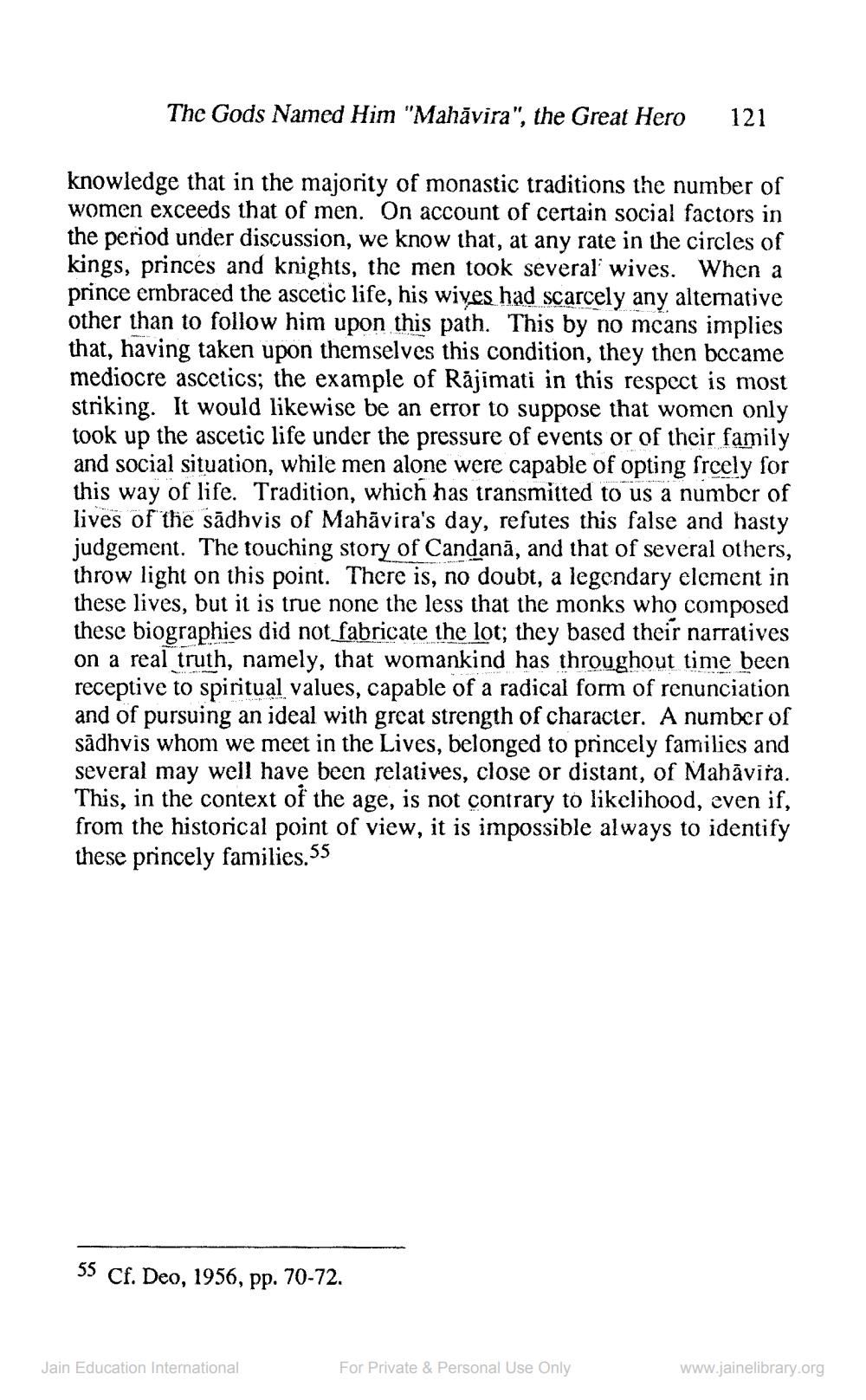________________
The Gods Named Him "Mahavira", the Great Hero 121
knowledge that in the majority of monastic traditions the number of women exceeds that of men. On account of certain social factors in the period under discussion, we know that, at any rate in the circles of kings, princes and knights, the men took several wives. When a prince embraced the ascetic life, his wives had scarcely any alternative other than to follow him upon this path. This by no means implies that, having taken upon themselves this condition, they then became mediocre ascetics; the example of Răjimati in this respect is most striking. It would likewise be an error to suppose that women only took up the ascetic life under the pressure of events or of their family and social situation, while men alone were capable of opting freely for this way of life. Tradition, which has transmitted to us a number of lives of the sadhvis of Mahavira's day, refutes this false and hasty judgement. The touching story of Candana, and that of several others, throw light on this point. There is, no doubt, a legendary element in these lives, but it is true none the less that the monks who composed these biographies did not fabricate the lot; they based their narratives on a real truth, namely, that womankind has throughout time been receptive to spiritual values, capable of a radical form of renunciation and of pursuing an ideal with great strength of character. A number of sadhvis whom we meet in the Lives, belonged to princely families and several may well have been relatives, close or distant, of Mahāvira. This, in the context of the age, is not contrary to likelihood, even if, from the historical point of view, it is impossible always to identify these princely families.55
55 Cf. Deo, 1956, pp.
Jain Education International
70-72.
For Private & Personal Use Only
www.jainelibrary.org




